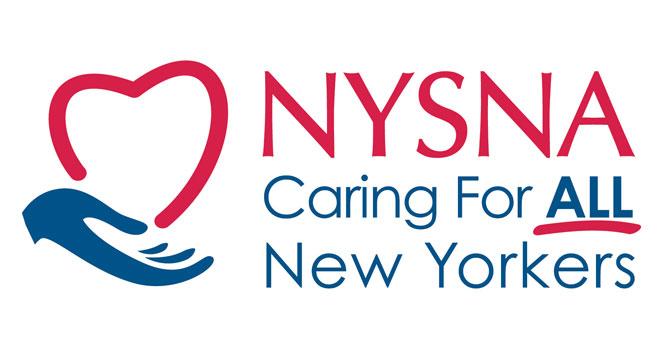2014 NYSNA Biennial, select reviews

This year, we meet at the Jacob Javits Center in Manhattan with an exciting and highly informative program. Some of the highlights include the following (please check your program for a complete list of offerings, times and locations):
In Nurses Taking Action in Response to the Crisis in our Specialty Practices, Colleen B. Murphy, RN, MS, Judy Sheridan-Gonzalez, RN, MSN, FNP, and Carol Lynn Esposito, EdD, JD, MS, RN combine in this presentation. Their purpose is to review how equipment shortages, lack of adequate staffing, insufficient time for documentation, and floating of nursing personnel mid-shift result in hospital specialty practices in crisis, and reflect on how these problems represent only the tip of the iceberg. This program gives an overview of what actions nurses can take to advocate for quality patient care, delivered in a safe and supportive working environment.
In Negotiating Nursing Practice Standards That Ensure Quality Care, Anne Bové, RN, MSN, Karine Raymond, RN, MSN, Kris Powell, RN, and Michael Healy, RN, discuss how nurses and healthcare professionals can collectively advocate to ensure quality patient care and protect professional nursing at the worksite. They also look at how nurses can effectively negotiate contracts in the private and public sectors that provide a healthcare environment conducive to safe, quality nursing care for all.
Hedy Dumpel, RN, JD, makes a presentation entitled, Assessment of Electronic Medical Records Industry & Other Technology, in which she assesses how health information technologies, such as electronic records and clinical decision support systems, are designed to increase management control by enabling the surveillance, deskilling, displacement, and division of RNs and other healthcare workers. She examines how hands-on patient care, traditionally the work of women, is essential to maintaining the art and integrity of the nursing profession in the face of the present onslaught of technological changes.
In Climate Justice: How RNs Can Address the Global Warming Health Crisis, presenters are Sean Sweeney, Phd, Sean Petty, RN, Jocelyn Andamo, RN, Alliance of Health Workers from Philippines and Linda Benoit, RN. Their discussion will entail how RNs and health care professionals need to understand the global health emergency posed by climate change and the continued corporate “business as usual” burning of fossil fuels, with the resulting rise in CO2 emissions. Global warming can be reversed, they argue, with the help of nurse advocacy for climate justice.
Michael Lighty, MA, presents Impact of the Affordable Care Act on Patients, RNs and Practice. Lighty discusses how only through a thorough understanding of the ACA and its impacts can RNs maintain their role as patient advocates in a changing corporate healthcare system, where insurance companies and hospitals increasingly integrate their operations and financial relationships.
In Safe Staffing: RNs Mobilize on Multiple Fronts, Pat Kane, RN, Carol Ann Lemon, RN, Verginia Stewart, RN, Rachel Haughton, RN and Pam Brown, RN, collaborate at a workshop to explore how RNs can collectively mobilize, together with their patients, in order to secure safe staffing legislation and contract provisions. The object is to help workshop participants describe the nurse staffing crisis and its impact on patients, reflect on legislative and contractual efforts to win safe staffing, and strategize on ways to strengthen the New York RN campaign to improve safe staffing contract provisions and pass the nurse-to-patient ratio bill.
In Healthcare Disparities and Hospital Cooperatives, presenters include Anthony Feliciano, CPHS, Ari Moma, RN, Prof. Phillip Thompson, PhD, Sharonnie Perry, Eliza Carboni and Leon Bell, J.D. They will discuss how nurses have witnessed government austerity and corporatization of healthcare to produce shocking disparities in access to quality care by race, nationality, immigration status, income and type of insurance (if any). That there are 15 hospital beds per 1,000 residents in the Upper Eastside of Manhattan vs. 2 to 3 beds in the boroughs is just one example. The co-operative model for healthcare in a hospital or geographic area offers nurses, care providers, patients and communities a necessary alternative to address these disparities.
In Crisis in Retirement Security and the Labor Movement: The Effect on Retirees’ Health, Mark Brenner, PhD, Grace Otto, RN, BSN and Eileen Laracuenti, RN, make the connection between a system that does not provide for retirement with security and the health of retirees. From the city workers in Detroit to the machinists at Boeing, union members are experiencing an unprecedented assault on their traditional pensions. And in Washington, politicians seem more willing than ever to cut Medicare and Social Security. How these trends impact our patients’ abilities to be safe from poverty and to have quality health in their retirement years is central to this presentation. They also explore who is behind the push to destroy traditional pensions, and what can nurses and other healthcare professionals do to preserve – even expand – this cornerstone of retirement security for unionized nurses, healthcare professionals and working people more generally.
NYSNA Board Member Karine Raymond, RN, speaks in a presentation, Respect for Private sector hospital RNs and Our Patients: A Call to Action. Raymond describes how private sector nurses are activist heroes because they have risen up to lead the fight to protect their patients and their practice from the corporatization of healthcare in major hospital conglomerates and safety net community hospitals alike. She leads a discussion on how nurses can fight for a contract and healthcare environment that supports their patients’ right to quality care by respected professionals.